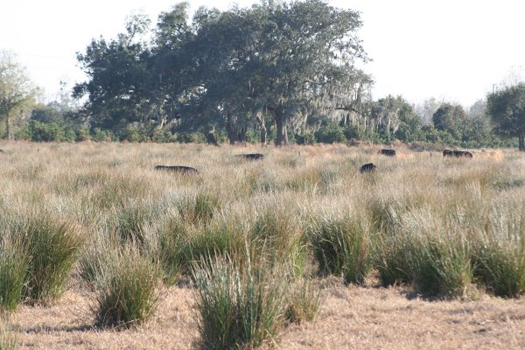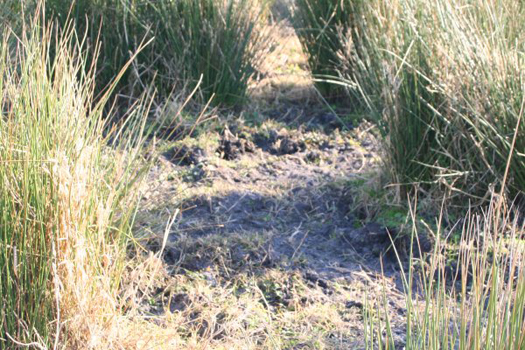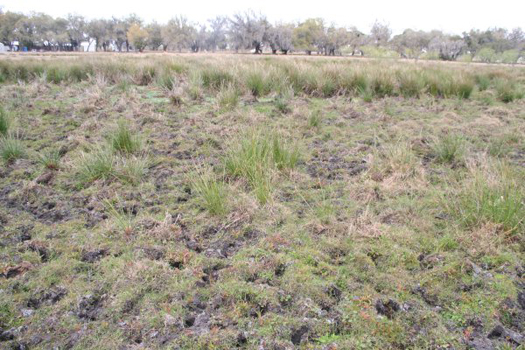Soft Rush (Juncus effusus) Control in Pastures
Soft rush (Figure 1), often called bull rush, is a clump-forming perennial plant that often infests low-lying areas in Florida pastures. It is usually found in pastures that are subject to seasonal flooding; these areas are typically dry during the dry season, but water is often present in the rainy season. It does not typically grow where water is present year-round, but will be present at the perimeter of ponds, lakes, streams, and canals.
Some state that cattle will graze soft rush when other forage becomes limited, but it is not readily grazed by cattle. Dense infestations of soft rush limit the available grazing area. Additionally, cattle appear to avoid soft rush in Florida pastures. This is evidenced by the trampling that is often seen around individual plants (Figure 2). Heavy traffic between soft rush clumps often results in bare-ground conditions. This can result in soil erosion and off-site movement of nutrients. Therefore, it may be best to remove soft rush plants in heavily infested pastures.
Control
Mowing is one tool that has been suggested for soft rush management. However, mowing is usually a temporary solution as regrowth is common with only one mowing operation per year. It is likely that only one mowing operation can be performed on an annual basis, and this is dependent of the seasonal wetland becoming dry enough to drive equipment through soft rush infested pastures. Therefore, mowing for control is typically not a good option.
In 2006 and 2007, we conducted an experiment to evaluate several herbicides for soft rush control. We applied herbicides to both clipped and non-clipped soft rush plants the day soft rush plants were mowed in separate pastures in April of both years. In essence, products that contain 2,4-D provided the most effective control (Figure 3). In fact, we believe that applying 4 pt/A 2,4-D will provide the most effective and consistent control of soft rush. Mowing the plants prior to herbicide application virtually had no influence on soft rush control, regardless of herbicide treatment.
Management
Once soft rush is removed, it is important to limit the reestablishment of soft rush plants. Grazing did not occur in our studies until 6 months after herbicide treatment. This allowed the forage to grow, resulting in less light penetration to the soil surface. This is extremely important as light is a requirement for soft rush germination. If the pasture is grazed soon after herbicide application, regrowth of soft rush is common (Figure 4). Therefore, if soft rush control is a goal in your operation, we recommend that grazing be limited for the first 6 months after herbicide application to limit regrowth or new seedling establishment.
Forage Tolerance
Limpograss is present in a lot of these seasonal wetlands where soft rush is commonly found. In the past, we have not recommended 2,4-D or products such as Weedmaster or Forefront that contain 2,4-D for weed control in limpograss pastures. However, our research has found that spring applications (when temperatures are cool) of 2,4-D cause little to no injury to limpograss. Therefore, we believe that 2,4-D can be applied in these seasonal wetlands during the dry period with little impact on forage production.
Recommendation
Apply 4 pt/A of 2,4-D to soft rush infested pastures during the dry season, usually April to May. Then, limit grazing after herbicide application for 6 months to prevent regrowth of existing soft rush plants or the germination of soft rush seeds





